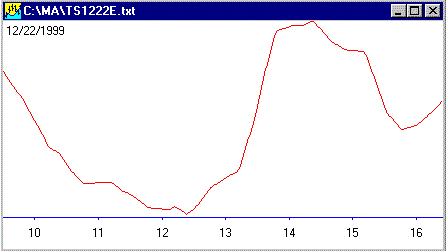
Trading Tutorial #1
This tutorial is designed to help you learn to trade using our intraday forecasts of the S&P 500. Here is the method that we recommended you follow:
1. Determine your general strategy for the day - do this
before the market opens
2. Wait until a forecasted turning point arrives
3. Decide whether the normal or inverted forecast is being
followed - if you can't decide or the fit is poor, just stand
aside
4. Look for confirming indicators and enter on a stop below price
Since the forecast is emailed the night before it is to be used, you have plenty of time to determine your strategy for the day. We include some software that makes this easy. Here is the forecast for the day we will discuss:

This forecast tells you a lot of things. We can expect at least two solid trading opportunities. The first is at around 12:15 and the second near 2:20. We also know where to look to take profits from each of these areas. We might also try to trade off the open, as it should be one way until noon. Out of these three possible trades, the best looks like the one from 12:15 to 2:20. It is the biggest and cleanest of the moves, so we should focus primarily on it.
Now that we have a game plan, we are a step ahead of the competition. Let's jump ahead to 12:55. This is a few bars after the official turn in the forecast, and our main trade is coming up. We now need to decide which forecast the market is following.
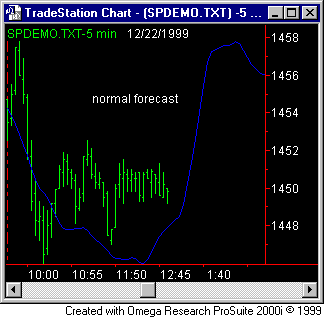
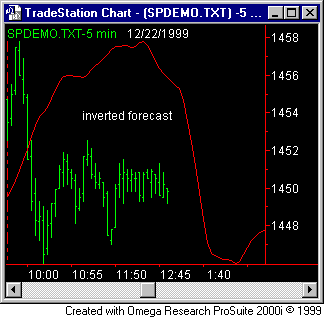
Well, which is it? Are we inverted or normal? Judging from the morning drop it looks like we are following the normal forecast. This means we are looking to take a long trade if one ever develops. If you ever have trouble deciding which forecast the market is currently following, it is best to step aside until things become clearer.
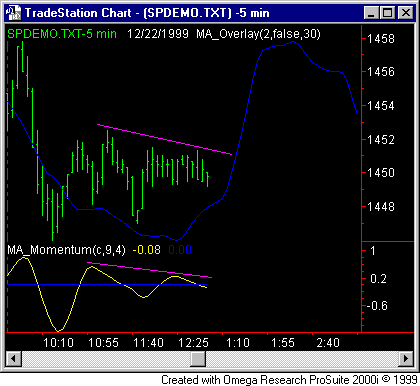
Now we need to check our confirming indicators. This is the part of the plan that each trader needs to customize for themselves. Confirming indicators are extremely important, so don't neglect them. Use the forecast as your main timing tool and let your various indicators help you pinpoint the turns. One approach to the situation at hand is to use trendline and momentum breakouts to the upside to get us in. If we get in, follow with a trailing stop and hold until 2:20.
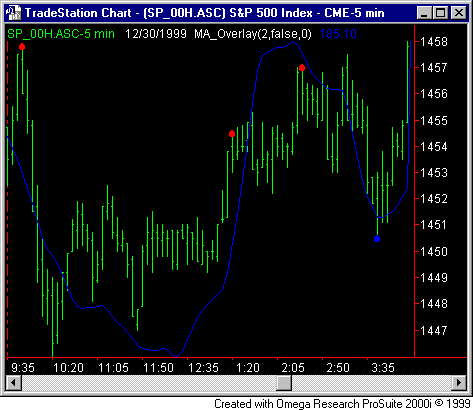
Here is the completed day. We probably would have been out at 2:30 on the second bearish Exhaustion Bar. Depending on how good our confirming indicators were, we could also have tried to time the trade off the opening and the one at 3:50. Exhaustion Bars caught them both on the chart above, but other methods could have been used as well.
In summary, let us recap the important points. We first constructed a general plan of what to do the night before. We should know all the important times of day and the type of move expected after each of those points before the market opens. We then waited for an important point and stopped to see which forecast the market was following. We only proceeded if it was obvious which way to go. Goodness of fit is another important issue to consider at this time. Finally, we looked at confirming indicators and actually placed the trade. All of these steps are important and none should be ignored.